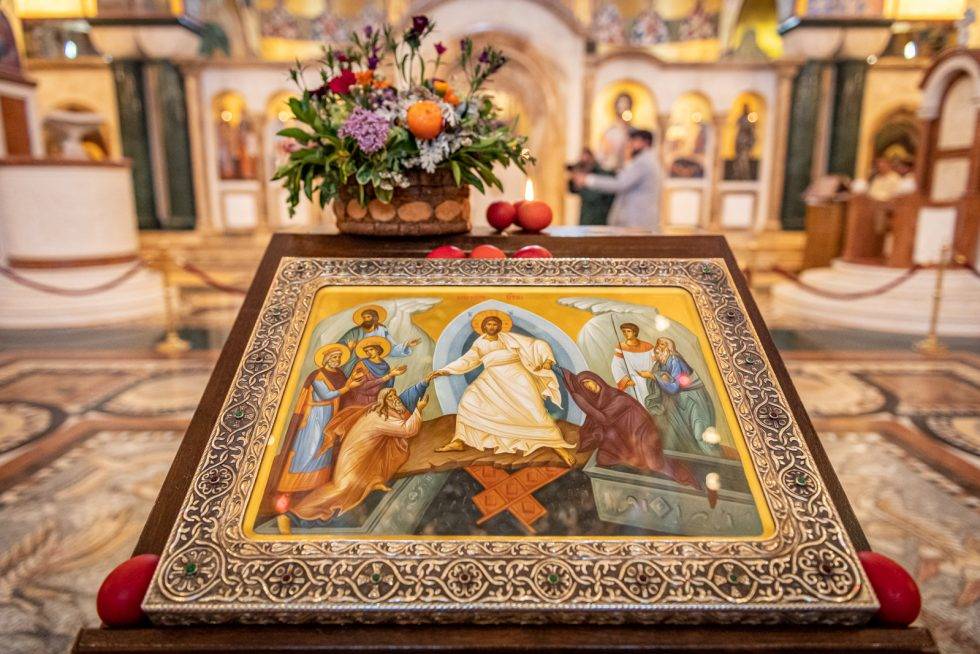
The beginning of the indicta - Church New Year
The first ecumenical council decided that the church year begins on 1/14. September. Our Holy Church prayerfully celebrates the beginning of the Church's new year - the beginning of the indicta.
In the 6th century, during the reign of Emperor Justinian the First (527-565), the reckoning of time by indicts or indictions was introduced. The word indict comes from the Latin word indictio, and this term referred to a special edict or provision that determined the tax obligations of the population for a fifteen-year period in the Roman Empire. Starting from the era of the reign of the Roman emperor Adrian (117-138), every fifteen years, after the evaluation of property, a special decree prescribed the tax obligations that each resident had towards the Roman state.
The funds collected from taxes were intended to support the Roman soldiers whose service lasted for fifteen years. Over time, the term indict began to be used as a unit in measuring and calculating the time of various historical events or in the dating of individual documents. On top of everything, starting from 312, this term also means the beginning of the New Year, which has since been celebrated on September 23, that is, on the day of the autumnal equinox, when the birth of the Roman emperor Octavian Augustus was also celebrated. Since 462, the beginning of the New Year has been marked on the first of September, so since then the beginning of the year coincides with the beginning of the month.
As a church holiday, the beginning of the indict is mentioned in Basil's minology from the 10th century, where it is recorded that the Lord Jesus Christ gave us Christians this holy holiday, which, even celebrating it with zeal, we thank Him. The aforementioned testimony indicates the antiquity of the celebration of the Nachala indicta holiday. Some liturgists assume that the custom of celebrating the mentioned holiday was established in the 4th or 5th century. However, the oldest relevant testimonies about the liturgical celebration of Nachala indicta are found only in the 8th century, in the writings of Saint Theodore the Studite.
The service of the Feast of the Beginning of the Indict brings us closer to the essential meaning and significance of the prayerful celebration of the beginning of the Church's new year. In the liturgical songs of this holiday, fervent prayers are offered to God to bless the wreath of the new summer of His kindness. Celebrating the beginning of the Church's new year, at the holy services we ask the Lord who created days and nights, time and years (kontakt of holidays) to sanctify and bless the new annual circle, to bestow the fertility of the earth and the blessing of the air, but also to bless and protect us all . The service of this holiday is imbued with thanksgiving to the Lord for all the good things he has given us. In the Gospel reading of the holiday, we hear about Christ's departure to the Nazareth synagogue, where he read the following words from the Book of the Prophet Isaiah: The Spirit of the Lord is upon Me, therefore anoint Me to preach good news to the poor; send Me to heal the contrite in heart; to preach to the captives that they will be released, and to the blind that they will see; to liberate the oppressed and to preach the good year of the Lord (Lk. 4, 18-19).
The church new year also marks the beginning of the annual liturgical circle, which consists of the holidays that we celebrate during the year. The first in a series of these holidays is the Nativity of the Blessed Virgin Mary - Little Lady.
PHOTOS
RELATED ARTICLES

Easter Tuesday
Maundy Tuesday, Easter Tuesday (Greek: Τρίτη...

Serbian Patriarch Porfirije Travels to Moscow Today
Responding to the fraternal call of His Holiness Patriarch of Moscow and All...

Calendar for April 21 Easter Monday
Early on Sunday, before dawn, Mary Magdalene, Mary the mother of James, Salome...





.png)